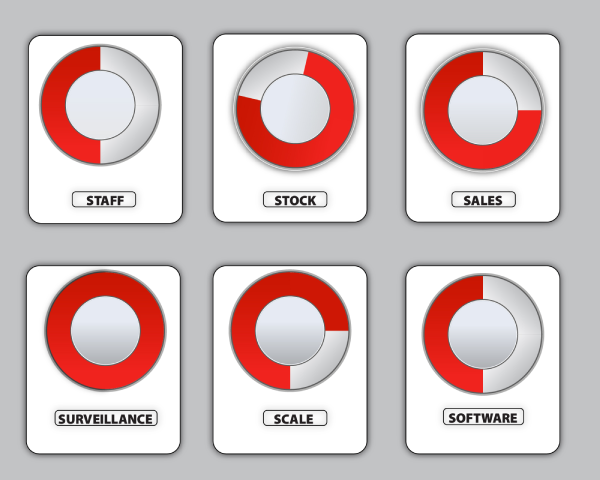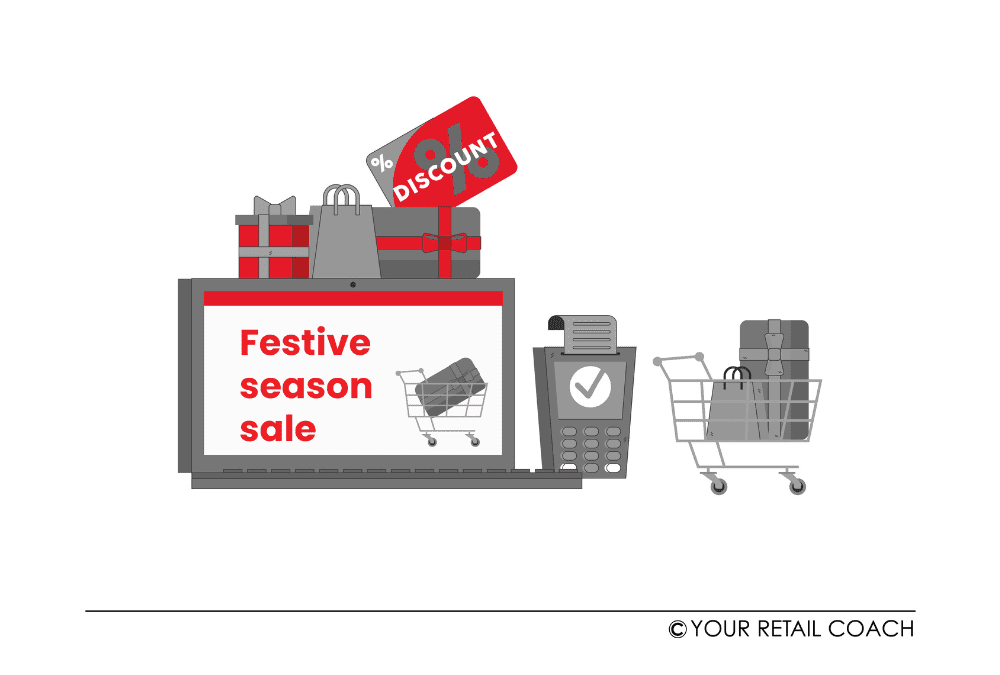Decoding the Festive Shopping Spree
For us, as customers, the festive season is a licence to spend. The vibes of festivity ushers with joy and a sense of celebration. This elevated mood often turns into an enhanced willingness to spend and indulge in shopping. It is a time when people go beyond essentials. Many wishlist items are finally added to carts and purchased.
During festive seasons, people spend not just for themselves but also for their families and friends. This is hardly not a part of any culture. People go about shopping for gifts that are a few notches higher than any regular presents.
Culture and tradition also contribute to increased shopping activities during festive seasons. In many countries, different festive seasons are traditionally associated with a specific nature of purchasing. This may include food, clothing, gold, decoration, etc.
Shopping as a means to boost moods or bring small and subtle changes in everyday life is no longer a hidden secret. Festive seasons provide the much-needed licence to go for it. For example, gyms and fitness centres see higher admissions at the start of a new year as commitment to fitness resolutions remains at an all-time high during this time. As a result, there is a spike in the demand for fitness accessories. A large number of organisations also pay festive bonuses to employees. This increased level of disposable income further fuels the shopping spree.
In light of the above considerations, it only makes business sense to make the most out of festive seasons. This blog attempts to analyse consumer behaviour during festive seasons towards aiding retailers in achieving increased sales.
Customers’ Budget: Care
Today, a large majority of customers use budgeting to make purchases. Even if there is a festive season going on, they know that overspending or unplanned spending could adversely affect their post-festive financial situation. They may choose to keep their celebrations low or minimalist instead of simply going by vibes and impulses. For retailers, the lesson here is not to go for an elevated festive pricing strategy. They can make festive shopping easier for their regular customers by providing credit or points on festive merchandise. For example, a departmental store can provide credit points for festive shopping to their regular customers which can be used in the purchase of regular merchandise later in the future. This will give some breathing space to customers to spend during festive seasons and ease the burden of bills in the coming weeks or months. Also, if customers feel that the prices set by a retailer are relatively higher, they might shift to any competing store – online or offline.
Retailers are only one link ahead of customers in the value chain. Their prices are also dependent on the prices at which goods are sold to them by distributors. The answer to this lies in aligning buying price negotiations and agreements with the final pricing strategy.
Shopping List Exists: Emerge as a Specialist
Even during festive seasons, customers who normally use a ‘shopping list’ do not deviate from this organising trick. It helps them save time and money. It eases the burden of decision-making while at stores. Impulsive purchases are curbed. The chances of forgetting any requirement are eliminated. In fact, in festive shopping, the use of shopping lists is more common to avoid rush, out-of-stock situations, and, saving traffic time. Customers seek to optimise their travel and commute. As stores and markets remain crowded, one-shot linear movement is highly preferred. Because of increased demand, the chances of facing out-of-stock situations also remain high. Shopping lists serve as a perfect rescuer to ease the shopping journey during the festive seasons.
The takeaway here for retailers is that they need to strive to cover as many shopping needs as possible within and around their merchandising strategy. If we take the Christmas season as an example, a good merchandising strategy would be to offer the maximum possible product and service necessities under one roof. For instance, a departmental store can consider offering:
- Christmas tree and ornaments
- Wreaths and garlands
- Lights
- Candles
- Christmas ham or turkey
- Eggnog and hot cocoa
- Christmas cookies and gingerbread houses
- Cheese and charcuterie boards
- Books and toys
- Gift certificates
- Creative gift-wrapping ideas for a festive touch
Deals and Discounts: Offers and Advertisements
During festive seasons, customers seek out deals and discounts. They seek to grab the best offers and derive the maximum advantage of festive season sales, promotions, and loyalty programs. This enables them to not only fulfil their shopping needs but also go beyond within the flexibility of their budgets. Customers do keep a tab on the various deals and offers by retail brands for the festive seasons. Retail malls and stores with the best deals often experience high footfall from the very beginning of the festive sale periods.
The two important derivatives for better festive marketing for retailers here are offering attractive deals and discounts and then promoting them effectively on time. As customers are willing to spend more during festive seasons, they also expect retailers to offer them good deals. This expectation emerges from the competition. Customers also know how to take advantage of the competition. So, retailers cannot afford to shy away from offering special deals and discounts during festive seasons.
The second thing is advertising about the festive season sale. Decorating a storefront catches the attention of only the by-passers. Distributing pamphlets through newspapers and hand-to-hand distribution is slightly more effective. The two most powerful options are billboards and social media marketing. Billboards may be increasingly becoming a thing of the past but they are very effective in certain circumstances like promotion on highways, distinctive places of attention, and showing marketing creativity.
Creative Gifting: Access or Experience Gifts
Getting creative with gifts is not a new trend. Personalisation of gifts exhibits more value than any standardised, made-for-all merchandise. There is also a growing trend of alternative gifting solutions like premium subscriptions, club memberships, or tickets to special events. The good thing with many such creative gifting options is that they can be more economical and memorable as well.
For retailers, offering personalised gifting solutions can be a tough ask. Also, many such goods may not necessarily fit into the branding and merchandising/inventory strategy of a retail store. The solution to attract this creative segment is to offer alternative gifting solutions like premium subscriptions to digital platforms, memberships to clubs or fitness centres, or tickets to movies or special events. Such gifts are also called access gifts, experience gifts, or recurring gifts.
Access or experience gifts need not necessarily be confined only to festive seasons.
Culture and Tradition: Engage
Culture and tradition play a profound role in boosting festive shopping among customers. In every culture, there are unique festivals that find deep roots in values and belief systems. These festivals are celebrated with great enthusiasm and spirit. Every festival has unique requirements for carrying out the associated traditional activities. This results in increased demand for specific products at the time of each festival. However, apart from offering merchandise to meet the festive demands, festive seasons are also an opportunity for retailers to forge deeper bonds with their customer base.
Here, we are talking about engagement on the part of retailers in local culture and tradition in meaningful ways. Unfortunately, WhatsApp statuses or social media posts are not enough to show that a retail brand cares about local culture and tradition. There are many ways in which retailers can give effect to this engagement. For example, during certain festivals, there’s a renewed emphasis on locally-made festival-specific food items or artisanal products that echo historical and cultural significance. Creating culturally sensitive campaigns is also a good initiative to exhibit engagement and forge better bonds with customers.
Before anything else, retailers need to have a bit of a fundamental understanding of the festival and the associated festive activities.
Go beyond tangible: Create Memorable Experiences
Anyone can stock up the right goods for the festive seasons. The question then emerges is of differentiation. This is where the element of experience comes in. The festive spirit that is in the minds of people must also be reflected in the offerings in terms of both products and services. This will entail retailers stepping out of their comfort zones and trying something that is not routine. Retailers should also bear in mind that experience is a subjective phenomenon.
Creating a memorable in-store experience for festive shoppers need not necessarily mean the use of AR and VR or walking robots or large display screens. It could be as simple as employees donning traditional wear that is specific to the ongoing festival. Not overindulging is also a good way to promote simplicity and sacredness which often constitute the core essence in many festivals.
Retailers could also think in terms of paying bonuses or benefits to their employees during festive seasons. Such a move could be a far bigger statement of reflecting the alignment of management philosophy with universal goodness. Customers have high regard for organisations that care for their employees and it affects brand perception (as a result). The purpose of this should not be to impress customers but to deliver genuine care and concern for employees. If you mistake this as a marketing gimmick, customers will read through and that will damage your brand reputation.
One of the less-talked festive retail strategies is building customer loyalty through festive gift-giving programs.
Excess and Wastefulness: Responsible, Sustainable Branding
While festivals are loved and celebrated by almost everyone, it is also common to witness excess and wastefulness in festive seasons. Grocery and departmental stores do not take any chances of missed sales making many of them end up with excess stocks. Restaurants tend to do the same with perishable materials like meat and vegetables. Many manufacturers and suppliers resort to quick procurement solutions to meet the swelling demand.
The sudden surge in demand for many commodities temporarily spikes up production and transportation activities taking a toll on the environment. Inflationary trends are always visible in the prices of essential commodities. The adverse effects are often visible on the quality of food served by fast-food restaurants or QSRs. Also, it becomes challenging for many small-scale producers, independent suppliers, artists, and craftsmen to compete with bigger players which hurts them financially. There is a growing segment of customers that attaches seriousness to the environmental impacts of consumerism and values sustainable shopping.
To avoid excess and wastefulness, retailers need a concerted effort in planning and executing their marketing strategies for festive seasons. Along with business acumen, they should also rely on market research and analytics for accuracy in demand forecasting. This will prevent unnecessary investment into inventory. The purchase and procurement strategies should not be drastically altered. This will help them function with minimal disruption to their existing business model. Retailers should also consider the inclusion of local produce from local suppliers and artisans as a part of festive-driven marketing.
Recap
The elated moods and vibes during festive seasons often turn into an enhanced willingness to spend and indulge in shopping. The festive season gives people the licence to spend – a time when they go beyond essentials. These festive seasons offer a brilliant opportunity for retailers to increase customer traffic during holiday seasons, boost retail sales and revenue levels, and forge better connections with their customers. To be able to do that, it is important to understand consumer behaviour during festive seasons.
On the fore, retailers need to have a fundamental understanding of the festivals concerned. This helps to build better engagement with the prevalent culture and tradition and come up with better festive-oriented marketing strategies.
For starters, retailers need to realise that even for festive shopping, people come to their shops with budgets and lists. Festive shopping can be made easier for regular customers by providing credit or points for buying festive merchandise. As far as shopping lists are concerned, retailers should strive to emerge as festival specialists and seek to cover as many merchandise needs as possible within and around their marketing and merchandising strategies.
During festive seasons, prices tend to go up and customers seek to shop from stores that give them the best deals and discounts. The two important takeaways here for retailers are offering competitive deals and discounts followed by relevant promotional campaigns with an emphasis on curated social media marketing strategies for the holiday seasons as well as festive seasons.
Offering access or experience gifts like premium subscriptions, club memberships, or tickets to movies/events are the latest buzz in festive offerings as gift-giving season retail tips.
Creating brand differentiation is a challenge for retailers during festive seasons. One effective strategy to address this issue is focusing on creating memorable experiences for customers and other stakeholders as well.
While festivals are celebrated en masse, it is common to see excess and wastefulness during festive seasons. Analytics-based demand forecasting helps avoid over-purchasing. Drastic changes in the business model should be avoided while keeping room for local and sustainable procurement.
For enquiries on festive retail business solutions or to speak to one of our expert retail consultants, please drop us a message and we will reach out to you.
FAQs
How to tailor your online store for the festive or holiday season?
As a priority, business owners should try to gain a fundamental understanding of the festivals concerned. This helps to forge the right engagement with the prevalent culture and tradition and come up with effective marketing strategies. Here are some tips for ramping up your online store for the festive or holiday season:
Develop a dedicated landing page for the occasion. This will lead to focused marketing efforts while making it more convenient for customers to find what they’re looking for.
Update the design and appearance of your website or app with festive-specific elements. Do not hesitate to try new and different colours. Bear in mind that such changes should not adversely affect the loading speeds. Run a compatibility check. The changes should also not affect the existing UX standards of your platform.
Keep your best deals and offers on the front. Create gift bundles so that varied needs can be covered in fewer items. Consider offering delivery charge discounts on bigger tickets.
Because fulfilling orders takes longer than usual during festive and holiday seasons, consider extending return and exchange timelines.
Run curated social media promotional campaigns tuned to the festive or holiday season.
Retail Healthometer
Check the health of your business? Are you ready to organize & scale ?












